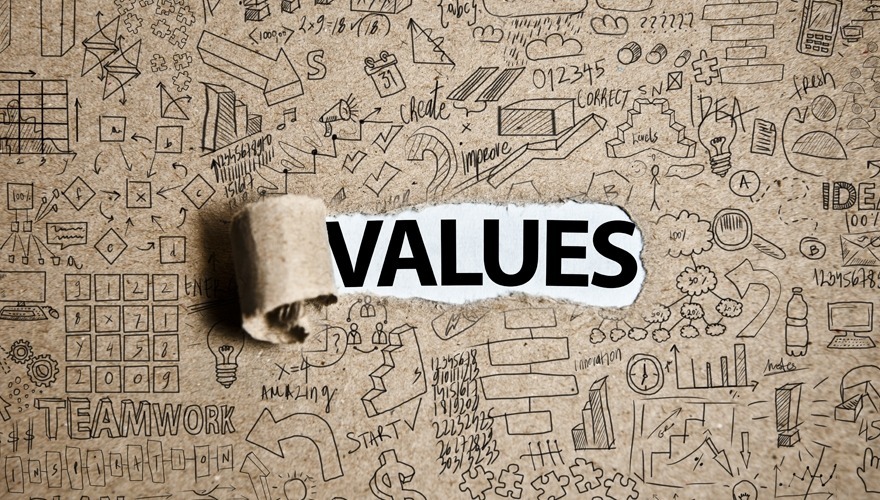Last week to kick off the new year, we discussed starting with a focus on creating or revisiting individual and/or organizational values. Values are a great place to set an ideal, but how do you make that a reality?
As Brene Brown says about values:
One reason we roll our eyes when people start talking about values is that everyone talks a big values game but very few people actually practice one. It can be infuriating, and it’s not just individuals who fall short of the talk. In our experience, only about 10 percent of organizations have operationalized their values into teachable and observable behaviors that are used to train their employees and hold people accountable.
Ten percent.
If you’re not going to take the time to translate values from ideals to behaviors—if you’re not going to teach people the skills they need to show up in a way that’s aligned with those values and then create a culture in which you hold one another accountable for staying aligned with the values—it’s better not to profess any values at all. They become a joke. A cat poster. Total BS.
So how do we convert “professing” into behaving? Here are four ways:
- Set Expectations Based on Values: Design your employee development and evaluation tools around your values and specify observable behaviors that are needed in order to meet and/or exceed expectations. If you are having trouble getting behaviors down or understanding how to put a behavior into language, Brown’s reference list of behaviors may help you.
For example, one of our clients values is “Service” and one sub-component of that value where they have to rate a person’s performance in the evaluation is: “The employee acts with empathy, kindness, patience, and honesty in all interactions and shows respect for those that he or she works with, including, but not limited to, co-workers, clients, vendors, and community representatives.”
Then, the person performing the evaluation has to input behavioral based information to support that rating such as, “Jane Doe exhibits our service value when she answers the phone at the front desk. She answers the phone with a positive greeting and tone of ‘Good morning, this is Jane Doe. Thank you for calling today! How may I direct your call or assist you this morning.’ She does this consistently regardless of mood or type of call or time of day. She is also friendly and welcoming at the front desk when all employees come in as well, greeting each person when they enter and exit with personalized exchanges.”
- Give Feedback in Values Based Language: Whether you are giving feedback in formal evaluation or in an ongoing developmental way, good and bad behavior should always be framed by putting your values into language.
To continue with our example above, you’re Jane Doe’s supervisor and you hear one of these positive phone interactions. You could immediately respond with, “Jane, I appreciate you being empathetic, kind and patient with the person you just spoke to on the phone. I could tell it was a difficult call, but you never lost patience or made the caller feel inferior. Thank you. You are demonstrating our value of Service and I appreciate it.”
- Decide Based on Values: Values really begin to become operationalized when you use them as the basis of all decision making, big or small.
Continuing with our example, let’s say you are deciding if you should even have a person answer the phone or automate it either because of budget constraints or because it just doesn’t seem like the modern thing to do because no one else is doing it anymore.
Based on your value of service, you may ask yourself and others: Does making this cut diminish our ability to show service? Does having a live person answering the phone differentiate us in the marketplace? Does and/or could it bring us a competitive advantage? If we get rid of it, what positive or negative outcomes could come of it based on all our values?
- Ask Based on Values: As a leader, using values to help people make decisions and guide their development is a great way to do all three of these things. When someone comes to you with a problem or a decision to make, ask them, “How do you see this decision in light of our organizational values? What do our values lead you to think is the next right thing?” Help them learn to think in terms of values which will help them act on them.
How do you live your values?


